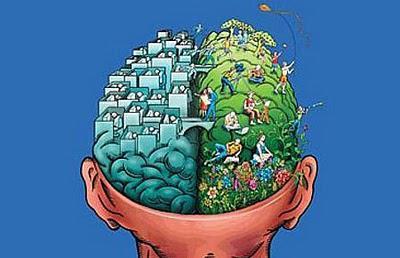There is no shortage of research projects whose aim is to “explain religion” or the “evolution of religion.” In addition to the Evolution of Religion Project which I interrogated in a recent post, anthropologist Harvey Whitehouse leads the “Explaining Religion” project based at Oxford University.
Whitehouse is interested primarily in religious variation and sees religions as falling into one of two categories or modes: “imagistic” and “doctrinal.” As our correspondent at The Economist recently noted, Whitehouse links these two modes to different kinds of memory:
Psychologists distinguish two types of long-term memory. One, semantic memory, records things consciously learned without first-hand experience—history lessons at school, for example. The other, episodic memory, records memorable events from a person’s own life.
Harvey Whitehouse thinks these different ways of remembering are harnessed by what he sees as two distinct aspects of religiosity. The doctrinal religious mode, as he dubs the first of these aspects, favours frequent but not particularly exciting rites that allow large bodies of teaching to be stored in a person’s semantic memory.
The second aspect—the imagistic mode, in Dr. Whitehouse’s terminology—relies on rare but highly arousing events that are etched into the episodic memory by dint of their emotional salience.

If we suppose that “religions” can in fact be roughly divided into two types (I am always suspicious of overly neat binaries or dichotomies), and if we follow Whitehouse’s division, it seems that the “imagistic” religions describe the beliefs of most pre-state or small-scale societies, and that the “doctrinal” religions describe the beliefs of most agricultural and industrial societies.
If this is the case, then basic religious variation — or division into imagistic and doctrinal modes of religion — might be better explained as a difference in political economy. The basic difference, in other words, is that pre-state and small-scale societies generally lack the kinds of elites, institutions, and technologies that promote “doctrinal” modes of religion. They also tend to lack writing and books, which may be prerequisites for “doctrinal” forms of religion.
Another way of looking at this is to observe that until 10,000 years ago (i.e., before the Neolithic Revolution), all “religions” were shamanic and therefore imagistic. The domestication of plants and animals led to the development of city-states and resulted in a shift to more organized, systematic, and “doctrinal” forms of religion.
While it may be true that “imagistic” religions draw primarily on episodic memory and “doctrinal” religions draw primarily on semantic memory, this seems to be an historical effect rather than a biological cause.
Postscript: For those interested in Whitehouse’s ideas, I recommend his book Modes of Religiosity: A Cognitive Theory of Religious Transmission (2004).

